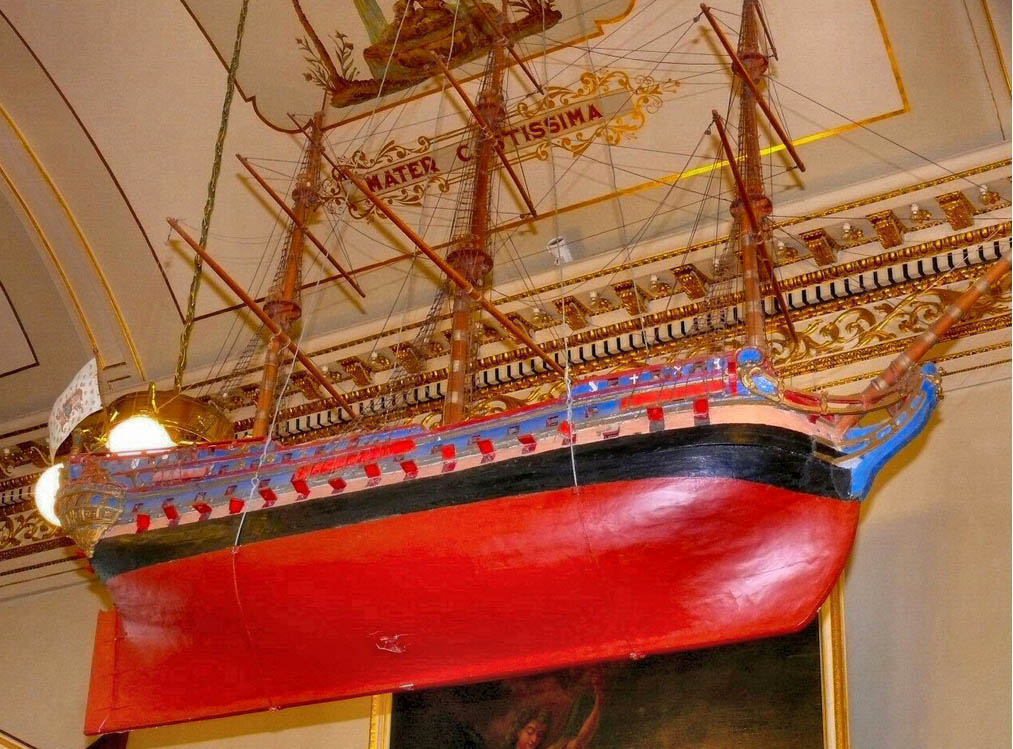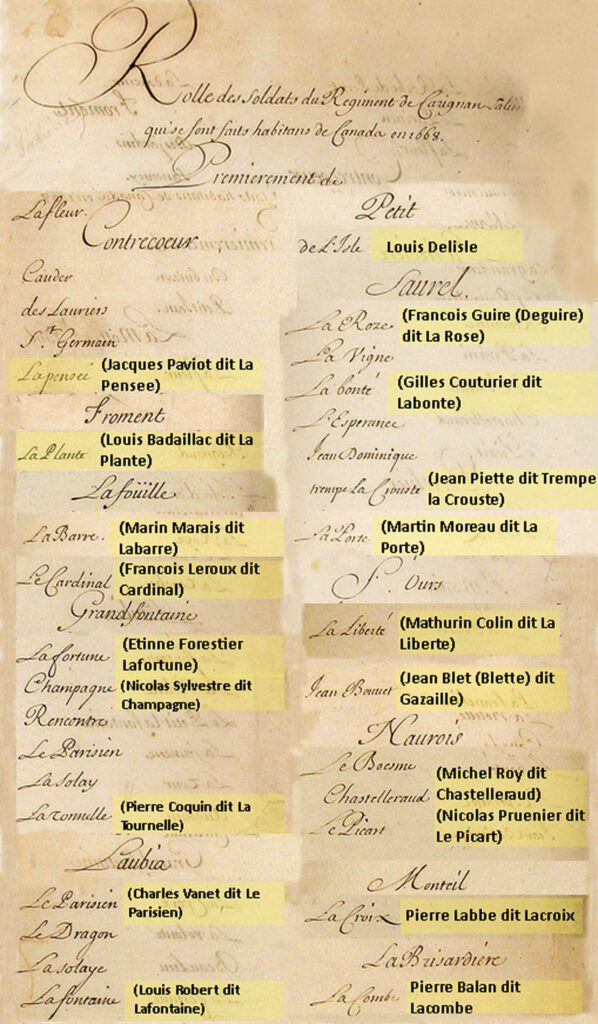Carignan-Salieres Regiment
The year was 1665, just 57 years after New France (Canada) was initially founded by Samuel Champlain in 1608. One would have hoped that after all those years life would be calmer, but the French settlers were in constant conflict with the natives, in particular the Iroquois. The French had strong commercial ties with the Algonquin and Huron, but when the Iroquois went to war with them, the French took their side and the Iroqouis then saw the French as mortal enemies. In hindsight it was a poor decision on the part of the French, but one they could not take back. I imagine all of these groups felt threatened. The continual attacks were stifling the growth of the colony which only had about 3,200 inhabitants. The few untrained and small militia groups that were formed by the colonists were insufficient against the Iroquois.
Under the advice of his chief minister Colbert, King Louis XIV enacted a package of reforms to aid the colony in Canada. Among other things they included changes to government (establishing a governor, an intendant and a high court) and the elimination of the Iroquois. The King decided that in order to squelch the native threat it was not enough to send a few dozen men; it would take a regiment of 1,200-1,300 men to get things done.
The men chosen were a combination of 2 foreign regiments: the Carignan Regiment from Savoy (present day Italy and southeast of France) and the German Salieres Regiment. The regiments may have been foreign, but the soldiers were French and had come from across France. The 2 groups of men merged in 1659 and in the fall of 1664 the order was given that the now Carignan-Salieres Regiment should make its way to La Rochelle, on the edge of the Atlantic, to prepare to embark for Canada. The regiment eventually consisted of 20 companies after 12 other companies from various regiments joined them. The final regiment was one of the first in the French army to wear uniforms.
La Rochelle was founded in the 10th century and by the 12th century was an important harbor. Until the 15th century, La Rochelle was the largest French harbor on the Atlantic coast, dealing mainly in wine, salt and cheese. This important French port is where many of our ancestors sailed from on their long journey to Canada.

Between June and September of 1665 the companies of the regiment arrived in Canada aboard 6 ships: Le Vieux Simeon, Le Breze, L’Aigle D’Or, La Paix, Le Saint-Sebastien and La Justice. Additionally supplies for the regiment arrived on the ship Le Jardin de Hollande. In just 4 months time the population of the colony grew by over one-third. The sight of the various companies of uniformed soldiers arriving had to be impressive and for the beleaguered colonists, a prayer answered. It was the first time that soldiers from the French royal army had been sent to help.


The soldiers were immediately put to work constructing fortifications along strategic points of the Richelieu River. They quickly built Fort Saint-Louis, Fort Sainte-Therese and Fort Richelieu. In order to avoid a long journey by canoe on the St. Lawrence and Richelieu Rivers, they also built the first road in Canada called chemin de Chambly, that connected the settlements of Longueuil and Chambly. It was a footpath by today’s standards.
Over the next year the fights that did occur with the Iroquois were mostly fruitless, but the Iroquois were so impressed by the show of force that in 1667 they agreed to sign a peace treaty with the French. That peace lasted for close to 20 years, during which time the colony grew and prospered.
The 1667 peace treaty marked success for the regiment. The soldiers were given the choice of either returning to France or remaining in Canada. This was a strategic move on the part of the King to grow the colony and to ensure that there remained a contingency of men who were adept with firearms and could protect against further attacks. Those who chose to remain were given incentives including land, food, supplies and money. Staying in Canada gave them a chance to own land and own a home, something that would be almost impossible back in France. About 400 initially signed up to stay, but only about 250 contributed to pioneer settlement. Many of these 250 men married Filles du Roi (King’s daughters). To date I count 23 of these soldiers as direct ancestors. Eighteen of the 23 men married a King’s daughter. The table below gives you some information about each of them.

There also was a roll created in 1668 showing the soldiers from each company that signed on to stay in Canada. Here’s the link to the original roll: List of the Soldiers of the Carignan-Salieres Regiment who became inhabitants of New France in 1668. I’ve located 20 of the 23 ancestors on the list and compiled them into the one page shown below. They are not easy to find since most are listed by their dit name.

“The regiment’s major contribution was the increase in the colony’s population—not necessarily in a direct sense, by marrying and having families themselves, but by bringing about peace with the Iroquois, which allowed for unions and families to flourish. During their presence in New France, the population doubled to well over 6,000.”1
I continue to marvel at the many trials and tribulations that our ancestors went through. Without them, we would not exist.
Thanks for visiting, come back soon,
Cindy
© 2022 Copyright by Cynthia Vadnais, All Rights Reserved
Carignan-Salieres Regiment Read More »
